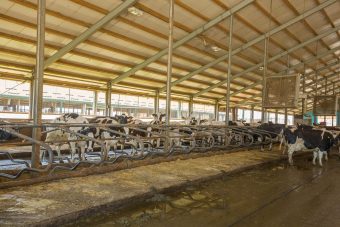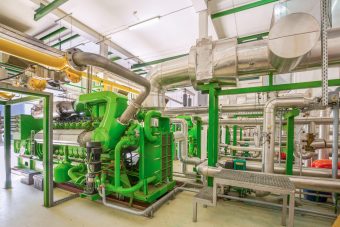
Renewable energy sources have become an inevitable topic, especially in the last year, yet it seems that contemplating them is reduced to very few sources. Solar energy could take the first place as a source available for wider use, which requires a relatively simpler and cheaper installation, followed by wind energy, with a more demanding installation process, but with great potential, which has been receiving more and more investments. However, a frequently mentioned source, hydro energy, is often found in a negative context in terms of jeopardizing the environment. The mentioned sources are the ones that most often come to mind when talking about renewable energy.
Thanks to its geographical characteristics, Serbia has a significant potential for obtaining energy from such sources. One of the potentials is biogas, which has not garnered enough attention yet and whose usefulness goes further than producing energy.
We asked electrical engineer Goran Knežević to explain what biogas is, its generation process and its advantages compared to other renewable sources.
IN FOCUS:
- EMPOWERING CITIZENS TO BECOME PROSUMERS OF SOLAR ENERGY
- ELECTRIC POWER DISTRIBUTION OF SERBIA – CHALLENGES OF CONNECTING PROSUMERS TO THE POWER GRID
- CHANGES IN THE RES SEGMENT LEAD TO A STABLE POWER SYSTEM

Biogas is a mixture of gases created by the decomposition of organic matter without the presence of oxygen. This process is called anaerobic digestion, and it could be compared to the process of digesting food in a cow’s stomach. Biogas can be produced from almost all organic residues, whether from farms, agricultural holdings, industries, the service sector, or food chains. In this way, in addition to solving the problem of supplying cleaner energy, biogas also solves the problem of waste. On the one hand, farms that generate organic waste for free or at extremely low prices can solve the waste disposal problem. At the same time, on the other, thanks to biogas plants, there is the possibility of transforming waste into electricity and heating/cooling energy, or biomethane. Biogas’ contribution to the reduction of environmental pollution is shown by the fact that burning biogas prevents the emission of methane into the atmosphere, a gas with a greenhouse effect that is 22 times more pronounced than carbon dioxide. By upgrading biogas to the biometer level, carbon dioxide is released that can be used in greenhouses or, say, the carbonated beverage industry. In explaining the biogas production process, we should mention that animal and vegetable waste contains a high percentage of proteins, fats and carbohydrates. During the anaerobic decomposition of such substances, which can be divided into four stages, namely hydrolysis, acidogenesis, acetogenesis and methanogenesis, a considerable amount of gas with a high percentage of methane (40-65 per cent by volume) is produced, which is called biogas (medium thermal power 16.2 – 19.8 MJ/Nm3).

“The decomposition process begins with the mechanical shredding of raw materials, fed several times a day into hermetically sealed tanks, so-called fermenters (digesters). The whole process takes place at a constant temperature, usually in the range of 36–42°C. The capacity of the fermenter is sufficient to keep the raw material in them for 30-60 days, which allows the bacteria to generate biogas efficiently. After it has been produced, biogas is purified and then transported to the so-called cogenerator. A cogenerator is a device created by connecting a gas engine and an electricity generator. In this way, electrical and thermal energy is produced (thermal energy is a consequence of cooling the cogenerator). The electrical energy is then measured and handed over to the Electric Power Industry of Serbia (EPS), and the heating/cooling energy can be used for own needs, or further sale,” explains Goran.
Prepared by: Katarina Vuinac
Read the story in the new issue of the Energy portal Magazine RENEWABLE ENERGY SOURCES



